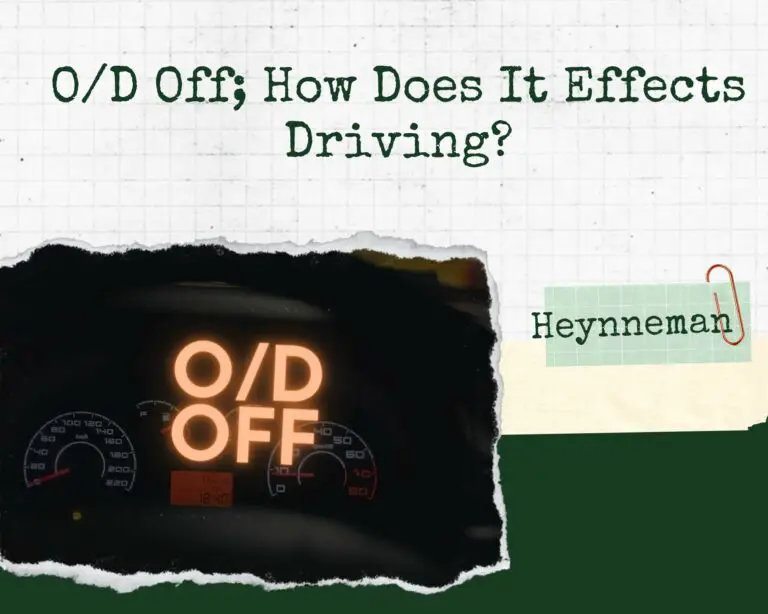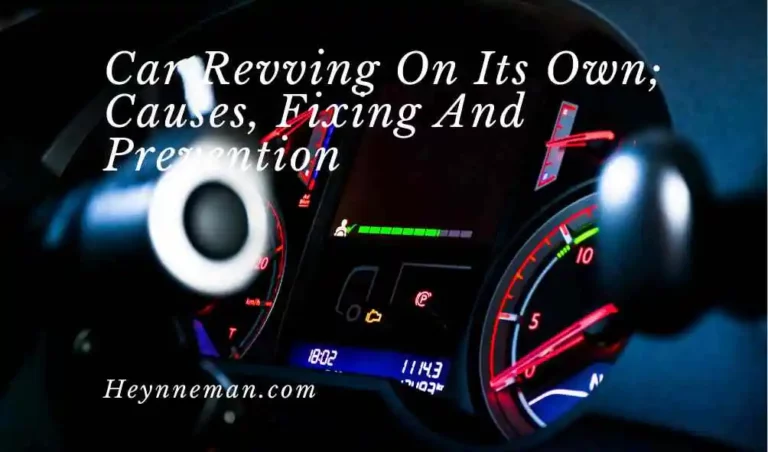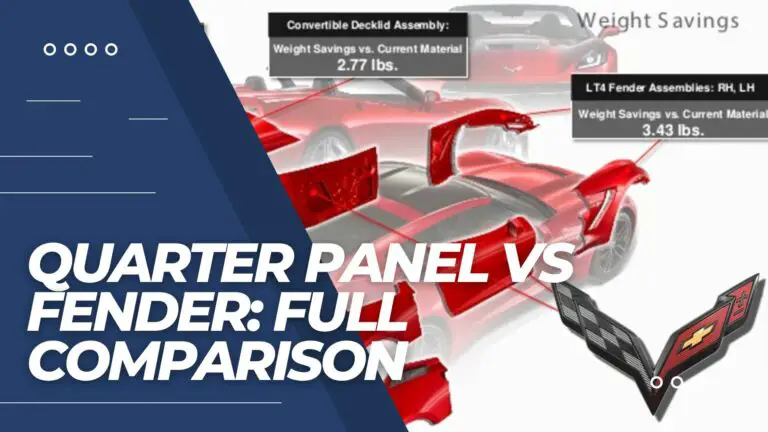Driving with Broken Coil Spring: Symptoms & Causes
Are you aware of your vehicle’s suspension system? Basically, a suspension system is a combination of shock-absorbing devices, coil springs, linkages, and tire air, which function as a supporting system for your vehicle from the road. So, as an experienced person, I know it will be dangerous to drive without a proper suspension system.
Sometimes, you may get an annoying experience while you are driving the car. It might arise due to the broken coil spring. Do you know how it happens? Precisely, coil springs are the vital mechanism of our car’s suspension system. Driving with a broken coil spring will be unsafe until you repair it.
Here are the exact details regarding the broken coil spring and its causes, consequences, and solutions. So, get ready to clear the issue of broken coil springs by reading this article.
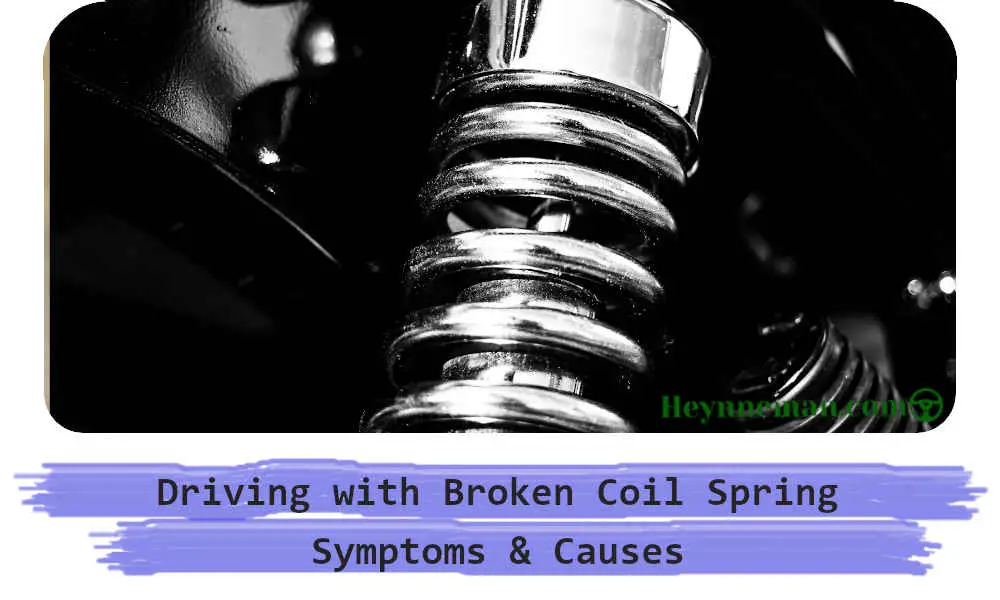
Understanding the Coil Spring
As we saw above, coil springs are an essential component of our car’s suspension system. Generally, the coil spring functioned to support the weight of the vehicle by absorbing the shock energy. This suspension system device can maintain contact between the vehicle’s surfaces.
Understand the functions of coil spring from below:
- Changes the angles of suspension alignment
- Provide comfort in driving
- Ensuring the stability of the vehicle while braking and acceleration
- Shock absorption
If you are riding through bumps or potholes, then the coil spring will be activated by supporting the weight of the car. Also, these coil springs can reduce the effects of your riding through the bumps. There are varieties of coil springs like leaf springs, air springs, compression springs, torsion springs, and rubber springs. These coil springs can vary depending on the kind of application where they are used.
It’s common for a fault to occur in the coil springs for several reasons. And we can notice different broken coil spring symptoms:
- Unusual bouncing
- Squeaking or rattling noise while you are riding over bumps
- Distance in braking will be increased
- Sagging occurs on the corner
- Irregular wheel arches
- Car swaying at one side
Usually, these symptoms can lead you to find the proper details, which will help you inspect the issue clearly.
Consequences of Driving with Broken Coil Spring
Absolutely, there is no doubt that driving with a broken coil spring will be unsafe. This means there are different kinds of consequences that might occur due to driving with broken or damaged coil springs.
Impact on Vehicle Handling
A major consequence of driving with a broken coil spring is the impact on vehicle handling, such as changes in steering responsiveness, instability during turns, increased body roll, and excessive bounce. Your car might be swaying if the coil springs are damaged. These faulty springs would refuse the up-and-down bouncing of the vehicle over the potholes and bumps. It will also be risky to steer normally while you are riding through the bumps. This change in steering responsiveness can sag the vehicle to one side. Then, all the suspension components would show instability during your turns due to the damaged coil spring. Shortly, the major consequences are;
- Changes in steering responsiveness
- Increased body roll and instability during turns
- Excessive bounce
Tire Wear and Alignment Issues
If you are driving with broken coil springs, the tire can be worn over the exerted strain towards the wheels and tires while you are turning the vehicle. The balanced movements of tires can be stuck due to the worn-out tires.
Basically, coil springs maintain the exact height consistency and the suspension alignment angles. If the coil springs are damaged, the car’s alignment system will be affected. We notice the issue if the steering control becomes poor due to the alignment issues. The tire wear and alignment issues will include;
- Uneven tire wear pattern
- Accelerated wear on other suspension components
Risk of Further Damage
Damage to coil springs can create a risk to our vehicle’s proper suspension system. Also, riding will be difficult and risky to control in emergency situations. It will be tough to ensure safety while you are driving a car with faulty springs. Briefly, the risks of further damages are;
- Potential damage to other suspension components
- Compromised safety in emergency
Causes of Broken Coil Spring
It is compulsory to inspect the suspension components of your car to avoid faults in coil springs. There are many reasons behind the issue of broken coil springs, like wear and tear, corrosion and rust, overloading, poor road conditions, manufacturing defects, lack of maintenance, and extreme temperature.
Wear and Tear
As we mentioned above, coil springs are mechanical components that can possibly wear and tear over time. Rust can accumulate on the coil due to the plastic coating getting damaged over time by continuous compression and being struck by stones or other conditions of roads like potholes and bumps. These will result in the wear and tear covers on coil springs.
Corrosion and Rust
Corrosion can arise on the coil spring due to extreme weather conditions or environmental factors such as moisture, salt, snow, and road debris. These environmental factors can result in the contamination of the suspension components of the car. The metal part of the coil spring can be corroded with the accumulation of dirt and debris. These corroded parts of the coil spring will damage or break when the car rides through the potholes and bumps in the road.
Overloading
As per the ultimate function of the coil spring, this supports the vehicle’s weight. However, there is a prescribed weight that can support its maximum load. If the vehicle carrying the overload exceeds its limits, the coil spring will weaken fast.
Poor Road Conditions

The quality of your coil spring might depend upon road conditions like potholes, bumps, and uneven terrain. Excessive speed over harsh road conditions can affect the suspension components like the shock absorber and the coil springs. It results in faster wear and tear occurring over springs.
Manufacturing Defects
The coil springs are rarely damaged due to defects in production and fittings. Improper manufacturing of coil springs with material flaws and design issues can lead to the coil spring breaking. Frequently, these defects might occur during the replacement of springs. Issues with aftermarket elements probably create the springs that support the vehicle at improper height. It can lead to damage by adding unusual pressure on the other parts of coil springs.
Lack of Maintenance
Maintaining the suspension system by inspecting it regularly or frequently is necessary. That means the carelessness in your maintenance of the vehicle’s suspension components will lead to the springs quickly damaged. If you hear or feel any unusual squeaking noises while riding through bumps or potholes, you must take proper action against the issue. However, without proper maintenance and regular inspection, this results in wear and tear, which can exacerbate coil spring issues.
Extreme Temperatures

Extreme temperatures are the major cause of the broken coil springs. Springs will compress if they are subjected to extreme cold. Moreover, specific coil springs may truly break if temperatures are extremely low for a longer period of time. The thermal expansion and contraction lead to increased stress while you riding at extreme temperatures.
What Causes Headlights Turn Off While Driving?
heynneman
Safety Concerns
As per the major function of coil springs, which ensures the safety of riding through several road conditions, they play a vital role in supporting your vehicle’s weight by accepting safety concerns such as increased risk of accidents and road safety regulations.
Do you know what will happen if you are driving with broken coil springs? Is it safe? Let us examine whether it is safe or not.
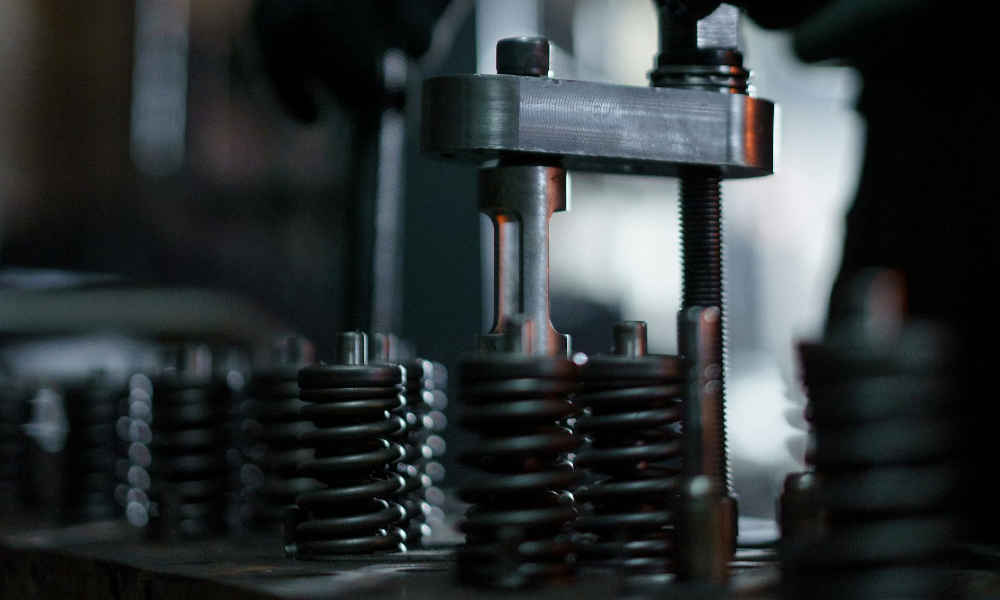
Increased Risk of Accidents
Driving with broken coil springs will be dangerous because the coil springs absorb the bumps from the road by supporting or balancing the normal weight of the vehicle. If this coil spring is damaged, the springs will fail to balance the weight while you are riding through the bumps or potholes. It results in an increase in the chance of accidents. Also, due to the broken coil springs, the vehicle can’t move straight, and it will be steering incorrectly. The vehicle is swaying at one side, resulting in accidents.
Road Safety Regulations
Driving with a broken coil spring is illegal. Generally, you can drive with a broken coil spring, even though it will be unsafe and difficult to ride. However, there are special rules and regulations on your driving that restrict driving with the coil springs by considering safety.
What Happens If Your Serpentine Belt Breaks? Causes & Solution
heynneman
Conclusion
As per the vital role of coil springs in the suspension system of our car, which supports the weight of the vehicle, there have to be several consequences, such as excessive bouncing, tire wear, alignment issues, and potential damage to another suspension system when the springs are damaged. So, understanding the causes of damaged coil springs will be essential to prevent the issue in the future. Corrosion, rust, wear and tear, overloading, poor road conditions, etc., are included in such causes of broken coil springs.
Absolutely, it is unsafe to drive with a broken coil spring. So, you should avoid driving during such cases. The only way to avoid the issue is to regularly maintain and inspect the suspension components. Also, you can prevent the issue by cleaning the vehicle underneath, avoiding overloading, and keeping the tires in better condition. If the coil springs are damaged or broken, you must seek professional assistance to replace them properly.
Reference
en.wikipedia.org/wiki/Coil_spring
www.researchgate.net/publication/305623860_Failure_analysis_of_a_motor_vehicle_coil_spring

